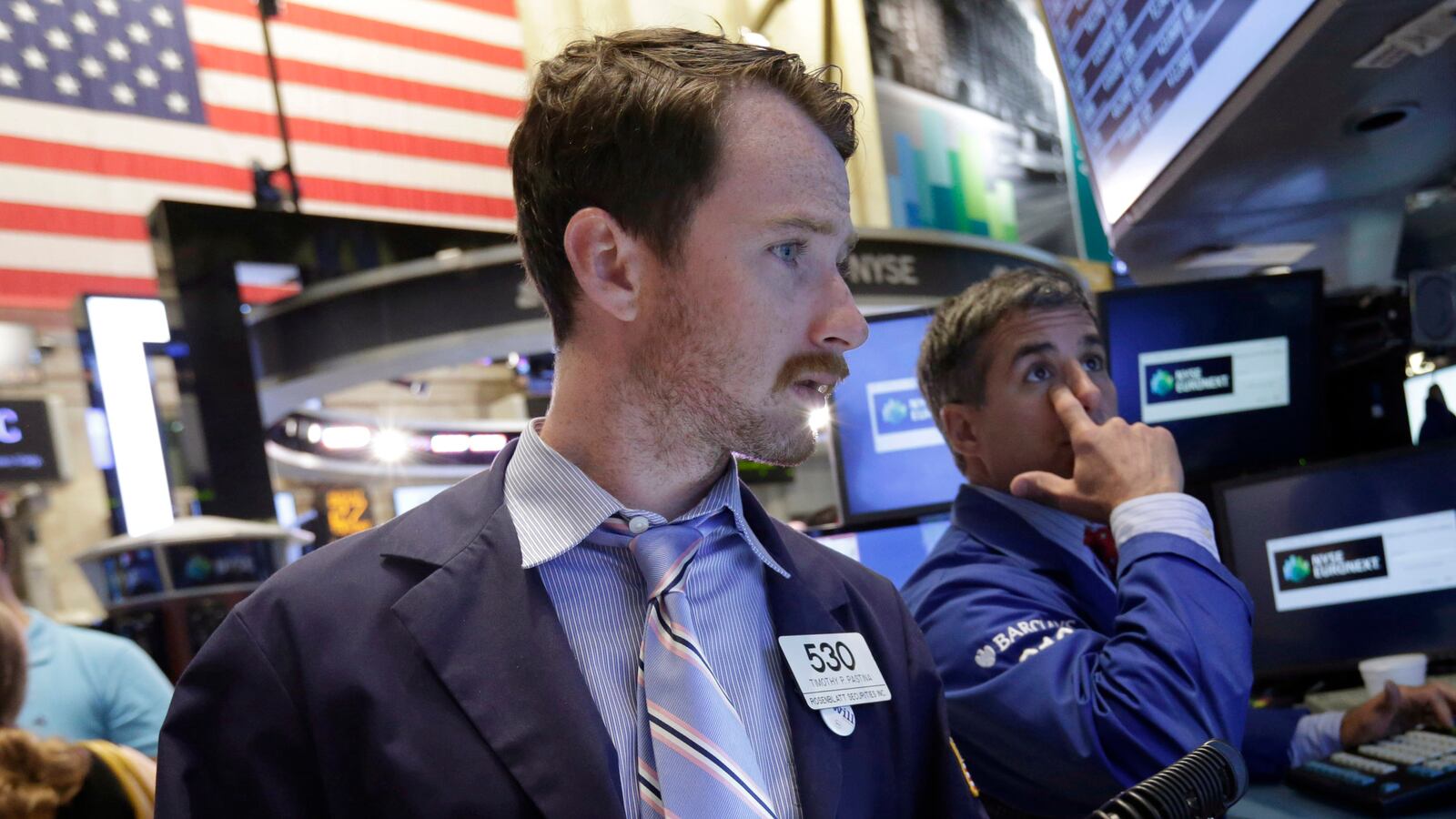On Tuesday, three big changes were made to the Dow Jones Industrial Average. Out went Bank of America, Hewlett-Packard, and Alcoa. In came Goldman Sachs, Visa, and Nike.

The news was of more interest to students of finance history rather than to practitioners of finance. Yes, the 30-member club gets pride of place among indices when market summaries are reported. But investment firms design products to mimic the performance of broader, more diversified indices like the Standard & Poor’s 500 and the NASDAQ 100.
Symbolic as it may be, the Dow, which dates back more than a century, is supposed to hold up a mirror to the U.S. economy. It assembles an exclusive group of 30 of America’s largest and most valuable companies, with representatives of every major sector. The Dow, like all valuation-based indices, is an imperfect tool, in large part because markets themselves are imperfect. At times, they boost the value of one sector or company irrationally (hello, Tesla!), and at other times they irrationally knock down the value of others (Apple’s stock was worth only a few billion dollars 10 years ago). Indices like the Dow tend to bring in companies after they’ve had a large, prolonged run-up, and tend to drop them only after they’ve suffered a significant, prolonged decline.
Still, the roster of guests checking in and out of the Dow Hotel tells us something about who is up and who is down, what sectors are thriving, and what has changed about the U.S. economy. At first blush, there wouldn’t seem to be much change happening today. One huge bank in, one huge bank out; one California-based technology firm out, another California-based technology firm in; one global manufacturer out, another global manufacturer in. But there are some significant differences between those exiting and those entering. And these moves say a lot about how the economy has changed: fewer makers and more takers, less manufacturing and more services, less building and more assembling.
Let’s take them in order.
Bank of America may seem like just another gigantic bank. But it’s got an interesting backstory. A.P. Giannini, the son of Italian immigrants, in 1904 founded the Bank of Italy in San Francisco to provide banking services to the “little fellows.” Not part of the East Coast establishment, Bank of America thrived far from Wall Street. It took deposits and lent them out so people could buy and build stuff. Its postwar growth surge was made possible by one of the first sustained efforts to provide consumer credit to middle-class borrowers. In the modern era, Bank of America strayed from commercial and consumer banking into investment banking, and merged its way into gigantism—and into trouble. It acquired Merrill Lynch in 2008 as part of the empire-building efforts of former CEO Kenneth Lewis. His successor, Brian Moynihan, has shrunk the bank’s footprint as it continues to dig out of the financial muck.
Goldman Sachs has always been a different creature. It’s an investment bank, not a commercial bank. Based on Wall Street, not in California, it has always served other institutions and high net-worth individuals, not middle-class investors and borrowers. Goldman makes money in a lot of different ways. But many of them involve taking a piece of transactions. Underwrite a stock offering or a bond offering, take a 7 percent commission. Advise on a deal, get paid a commission. Manage money, and take a percentage of total assets as the fee. Do a transaction, and take a couple of basis points as a commission. Yes, Goldman often puts its own capital to work. But to a large degree, investment banking is a service business whose success rests on taking a little piece of every transaction that comes its way.
Hewlett-Packard was the classic startup, the brainchild of two men working in a garage. It was a manufacturer that became a technology firm, building computers, and printers, and selling toner. But like many other manufacturers, HP has seen its core business suffer as competition rises and margins grow thinner. Carly Fiorina’s decision to double-down on PCs by purchasing Compaq didn’t help matters. After going through several CEOs in the space of a few years, it has found stability under Meg Whitman, the former CEO of eBay. IBM, which is still a Dow component, long ago jettisoned hardware manufacturing, selling its PC business to Lenovo and investing in higher-margin services and software. Hewlett-Packard has tried a similar tack. But in its most recent quarter, services and software were only about one third of total revenues.
HP is being replaced by a technology firm that already is a service firm, and has always been one. Visa, founded in 1958, is also something of a taker rather than a maker. The creation of a group of banks, Visa doesn’t make a technology product. Rather, it enables transactions. Yes, it has built up a huge, global business, and it provides a tool that few businesses can do without. But it makes money by taking a few pennies out of every dollar transaction. Visa leaves it to others to come up with the smart business ideas, to build the services, experiences, and products that people want. It is a highly efficient, fair, reliable, technologically advanced, and cheap-enough middleman.
The manufacturer leaving the Dow is Alcoa, the Aluminum Company of America. Founded in 1888 in Pittsburgh, Alcoa has long been a symbol of American industrial brawn. It takes raw materials, applies energy, and creates rolls of metal that people use to build stuff. While it developed aluminum foil in 1910, it has never been much of a consumer-facing company. It’s a giant, global player that uses massive plants to feed a commodity product to corporate customers. In recent years, it has faced difficult competition, excess capacity, and the challenge of dealing with the boom-and-bust cycle common to commodities.
Alcoa’s replacement is on the opposite end of the spectrum. It’s a new-age, consumer-facing, asset-light, premium manufacturer. Nike turns cheap commodities (plastic, leather, cotton, polyester) into expensive finished products by relying on its brand, design, and marketing brilliance. Rather than invest in huge, energy-intensive plants, Nike outsources lots of production. Aluminum can last for decades. Nike shoes and apparel, while expensive, are essentially designed to be disposable. And it has built its own network of physical stores to reach consumers where they are.
The three expelled members of the Dow represent what is now the Old Economy, one in which you might take a loan from Bank of America, buy a bunch of aluminum to build a factory, and then manage that factory with the help of HP computers and servers. The three new entrants represent the New Economy: start a website to sell Nike products online to customers around the world, and have Visa process the transactions. Then, when you’ve got enough critical mass, Goldman Sachs will take you public.






